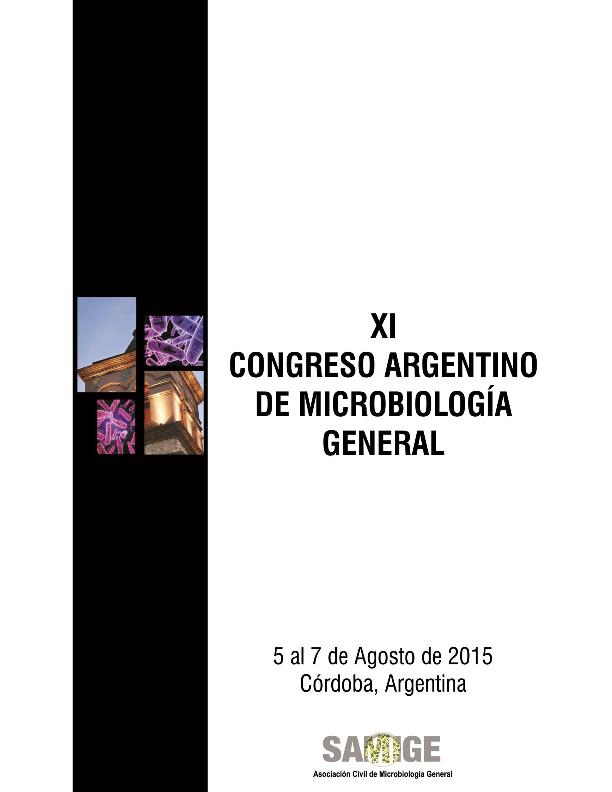Evento
Analysing bacterial communities from microbial mats and sediments located in the Atacama desert
Fernández, Ana Belén; Rasuk, Maria Cecilia ; Kurth, Daniel German
; Kurth, Daniel German ; Contreras, M.; Novoa, F.; Poire, D.; Farias, Maria Eugenia
; Contreras, M.; Novoa, F.; Poire, D.; Farias, Maria Eugenia
 ; Kurth, Daniel German
; Kurth, Daniel German ; Contreras, M.; Novoa, F.; Poire, D.; Farias, Maria Eugenia
; Contreras, M.; Novoa, F.; Poire, D.; Farias, Maria Eugenia
Tipo del evento:
Congreso
Nombre del evento:
XI Congreso Argentino de Microbiología General
Fecha del evento:
05/08/2015
Institución Organizadora:
Sociedad Argentina de Microbiología General;
Título del Libro:
Libro de Resumenes: XI Congreso Argentino de Microbiología General
Editorial:
Sociedad Argentina de Microbiología General
Idioma:
Inglés
Clasificación temática:
Resumen
The Atacama Desert has more than 100 basins with interior drainage and most of them contain salt flats. These ecosystemshave extreme environmental conditions that allow the development of unique microbial communities. The objetctive of this wasto study the bacterial diversity using independent culture tools of microbial mats and sediments from salt flats in the AtacamaDesert. Some physicochemical conditions of the water surrounding these samples were analysed to discover if anyphysicochemical characteristic could be influencing in its taxonomic composition. Five samples were collected, three of themwere microbial mats and two were sediments. The mat samples were taken from Laguna Llamara (samples named LL1 andLL2) and Laguna Cejar (Cej). Sediments were taken from Laguna Jachucoposa (Cop) and Laguna Pujsa (Puj) where microbialmats are not present. Total metagenomic DNA extraction was performed on each sample and the V4 hypervariable region of thebacterial 16S rRNA gene was amplified by pyrosequencing using the Ribosomal Database Project (RDP)-suggested universalprimers. Diversity of the microbial community was assessed using the QIIME software package. Lakes that harbor microbialmats have a higher salinity and a lower dissolved oxygen concentration and proportion of organic matter and total phosphorousthan lakes where mats are absent. All the samples have important concentrations of arsenic, with an extremely high amount inPuj. Proteobacteria and/or Bacteroidetes are the major phyla represented in all samples. Also, other phyla as Spirochaetes,Chloroflexi or Verrucomicrobia are found. However, cyanobacterial sequences are only observed in LL2 and Puj. On the otherhand, we have found a higher diversity in sediment than in mat samples. The sediments samples contain phyla not observed inmat samples. 16S rRNA gene sequences classified within Actinobacteria and Gracilibacteria are only found in Puj and related toTenericutes, Gemmatimonadetes and Acidobacteria are only observed in Cop. Finally, an important fraction of the sequencescould not be classified at phylum level. The high diversity found in sediment samples may be explained by the physicochemicalconditions in the environment. For example, they have a lower conductivity than mat samples. It is known hypersalineenvironments have a low diversity, where halophilic microorganisms are able to survive to these extreme conditions becausethey have specific strategies to balance the osmotic pressure. Besides, we found a low proportion or absence of Cyanobacteriain the ecosystems studied, suggesting the possibility that other groups may be playing an essential role as primary producers inthese extreme environments. Additionally, the large proportion of 16S rRNA gene sequences that could not be affiliated to anyknown bacterial phyla suggesting that in these ecosystems there are potential novel representatives of bacterial phyla not yetdescribed.
Archivos asociados
Licencia
Identificadores
Colecciones
Eventos(PROIMI)
Eventos de PLANTA PILOTO DE PROC.IND.MICROBIOLOGICOS (I)
Eventos de PLANTA PILOTO DE PROC.IND.MICROBIOLOGICOS (I)
Citación
Analysing bacterial communities from microbial mats and sediments located in the Atacama desert; XI Congreso Argentino de Microbiología General ; Córdoba; Argentina; 2015; 1-2
Compartir



